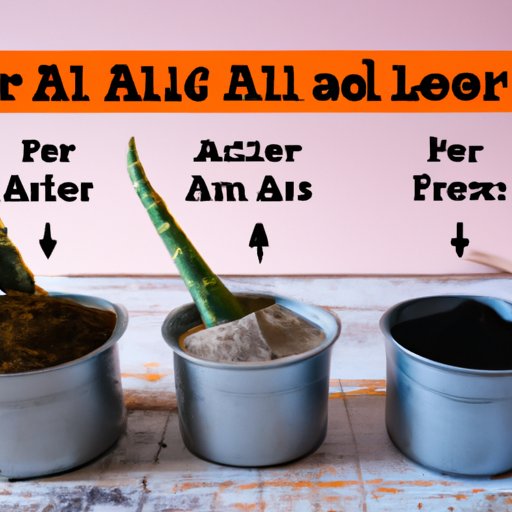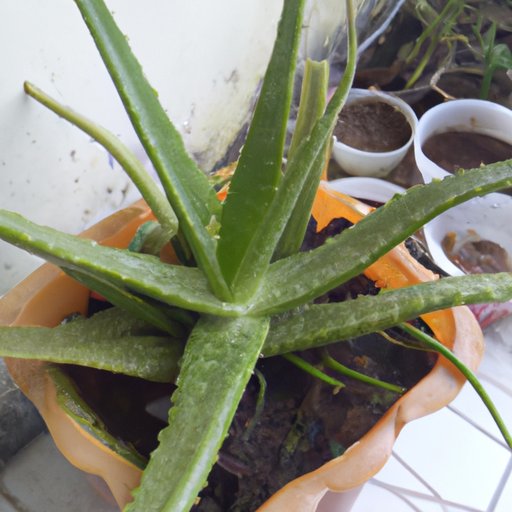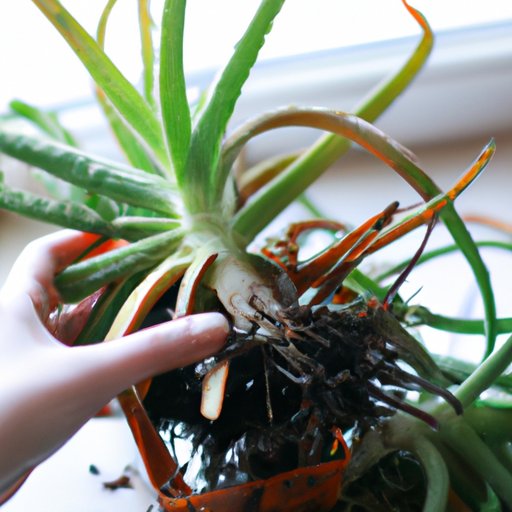Introduction
Aloe Vera is a popular succulent that’s easy to grow indoors. It’s a versatile plant that can be used for medicinal purposes or simply as a decorative addition to your home. If you’re looking to add an Aloe Vera plant to your indoor garden, here’s everything you need to know about caring for it.

Choose the Right Pot and Soil for Your Aloe Vera Plant
When selecting a pot for your Aloe Vera plant, size matters. The pot should be slightly larger than the root ball of the plant, with plenty of room for drainage. Be sure to use a pot with drainage holes so that the soil doesn’t become waterlogged. You’ll also want to select a potting mix that drains well and contains enough organic matter to keep your plant healthy.
When it comes to soil, you have several options. An all-purpose potting mix will work fine, or you can mix your own blend using equal parts of perlite, peat moss, and coarse sand. For extra drainage, you can also add some pumice or vermiculite. Whatever you choose, make sure the soil is light and airy so that water can easily drain through.
Place Your Aloe Vera Plant in a Sunny Spot
Aloe Vera plants thrive in bright, indirect sunlight. Place your plant near a south-facing window if possible, as this will provide the most amount of sunlight. Make sure to rotate the pot regularly so that all sides of the plant receive light. If the leaves start to curl or yellow, the plant may be getting too much direct sunlight.
If the space you’re working with is limited, you can also use a grow light to supplement natural light. Aim for 12-14 hours of light per day for best results. During the winter months, when there’s less daylight, you may need to increase the amount of artificial light.
Water Your Aloe Vera Plant Properly
Aloe Vera plants are drought-tolerant and don’t require a lot of water. However, they do need some moisture to stay healthy. Water your plant deeply once every two weeks during the growing season. During the winter months, you can reduce the frequency of watering to once a month. When you do water, make sure the soil is completely saturated but not soggy.
To check if your Aloe Vera plant needs water, stick your finger into the soil up to the first knuckle. If the soil feels dry, it’s time to water. If the soil still feels damp, wait a few more days before watering again.

Feed Your Aloe Vera Plant Regularly
Aloe Vera plants need nutrients to stay healthy and grow. Feed your plant with a balanced liquid fertilizer twice a month during the growing season. Choose a fertilizer that’s formulated for cacti and succulents and follow the directions on the package. Avoid fertilizers with high levels of nitrogen, as this can cause the leaves to burn.
During the winter months, you can cut back on feeding your Aloe Vera plant. Once every two months should be sufficient. Too much fertilizer can be just as harmful as too little, so be sure to follow the instructions on the package.

Prune and Propagate Your Aloe Vera Plant
You can prune your Aloe Vera plant to keep it looking neat and tidy. To prune, use a clean pair of scissors to trim off any dead or damaged leaves. Be careful not to remove too many leaves, as this can weaken the plant. Trim off any spent flowers as well to promote better growth.
You can also propagate your Aloe Vera plant by taking cuttings from the parent plant. To do this, use a sharp knife to remove a piece of the plant that’s at least 3 inches long. Let the cutting dry out for a few days, then plant it in a pot with well-draining soil. Keep the soil moist, and in a few weeks, you should start to see new growth.

Remove Dead Leaves and Spent Flowers
Removing dead leaves and spent flowers from your Aloe Vera plant helps promote better growth. Use a clean pair of scissors to snip off any dead or damaged leaves. This will help the plant focus its energy on producing healthy new growth. It will also help prevent diseases from spreading.
For spent flowers, gently tug them off the stalk. Be careful not to damage the plant in the process. Removing spent flowers will help the plant conserve its energy and produce more flowers in the future.
Watch Out for Common Pests and Diseases
Aloe Vera plants are relatively hardy, but they can still succumb to pests and diseases. Watch out for common pests like mealybugs, aphids, and spider mites. These pests can be controlled with insecticidal soap or neem oil. If left untreated, they can weaken the plant and cause leaf drop.
Diseases like root rot and powdery mildew can also affect your Aloe Vera plant. To prevent these diseases, make sure the plant is not sitting in water and that the soil is well-draining. If you notice signs of disease, treat the plant with a fungicide or contact a local nursery for advice.
Conclusion
Caring for an Aloe Vera plant at home is easier than you might think. With the right pot and soil, plenty of sunlight, and regular watering and fertilizing, you can keep your Aloe Vera plant healthy for years to come. Just remember to watch out for pests and diseases, and you’ll have a thriving Aloe Vera plant in no time.
(Note: Is this article not meeting your expectations? Do you have knowledge or insights to share? Unlock new opportunities and expand your reach by joining our authors team. Click Registration to join us and share your expertise with our readers.)
